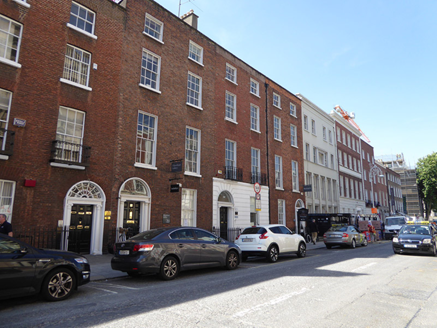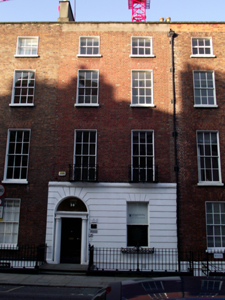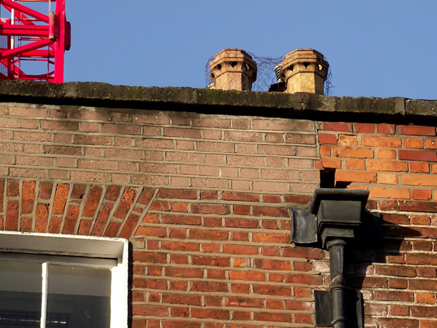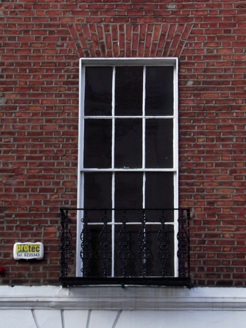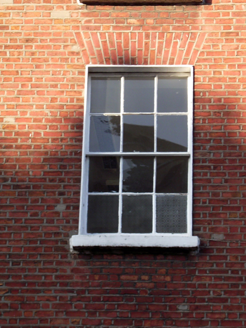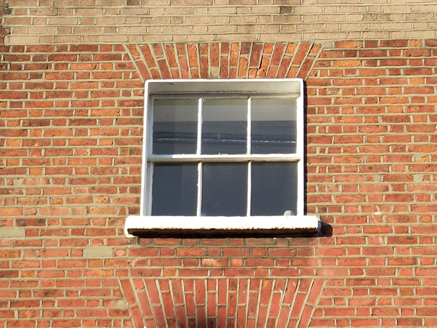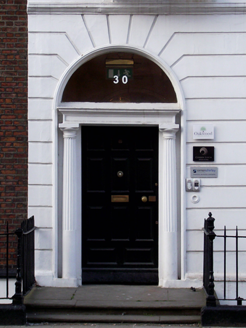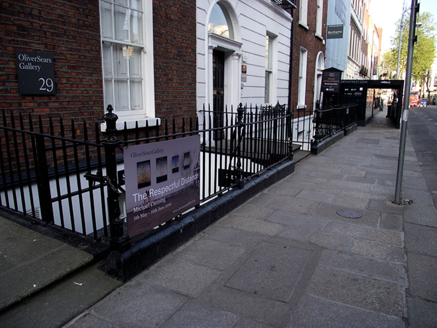Survey Data
Reg No
50100161
Rating
Regional
Categories of Special Interest
Architectural, Artistic
Original Use
House
In Use As
Office
Date
1800 - 1820
Coordinates
316196, 233682
Date Recorded
30/05/2016
Date Updated
--/--/--
Description
Attached two-bay four-storey former house over basement, built c. 1810 as middle of terrace of three (Nos. 29-31). Now in commercial office use. Flat-roofed two or three-storey return to rear, abutted by six-bay two-storey addition. M-profile roof, having rebuilt parapet with masonry coping, parapet gutters, cast-iron hopper and downpipe, and rendered chimneystacks with octagonal pots. Flemish bond red brick walling to upper floors and painted channelled rendered walling to ground floor. Square-headed window openings, diminishing to upper floors, with patent reveals, painted masonry sills and brick voussoirs. Timber sliding sash windows with some historic glass, one-over-one pane to ground floor, six-over-six pane to middle floors, three-over-three pane to top floor, and eight-over-eight pane to basement with iron grille fixed; rear has timber sash windows, tripartite to west bay and with round-headed stairs window to east bay. Ornate nineteenth-century cast-iron balconettes to first floor. Round-headed door opening, having moulded reveals, trabeated painted masonry surround with panelled entablature over two-thirds fluted Doric columns, plain fanlight, and eleven-panel timber door with brass furniture. Granite entrance platform bridging basement, with two granite steps to street level. Basement area enclosed by cast-iron railings on painted granite plinth. Yard to rear.
Appraisal
An early nineteenth-century house forming a largely cohesive terrace with Nos. 29 and 31 to either side, although No. 30 has been enriched with cast-iron balconettes and horizontally channelled rendering to the ground floor. Largely well retained, the typically restrained façade displays well-balanced proportions and graded fenestration, enlivened by a Doric doorcase and good setting features. This terraced group is an important representative of the Georgian character of Molesworth Street, laid out in the 1720s by Viscount Molesworth.
